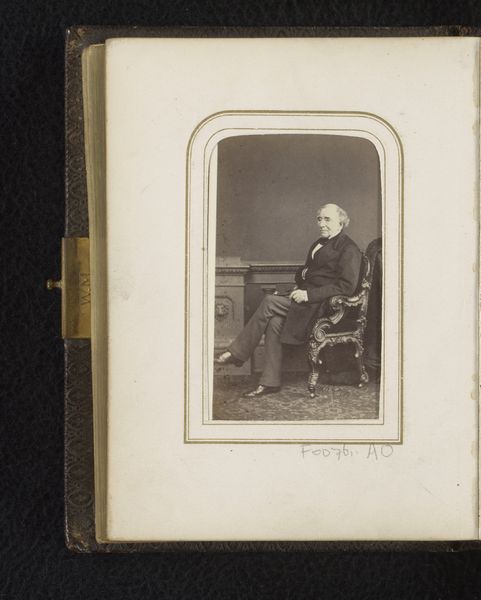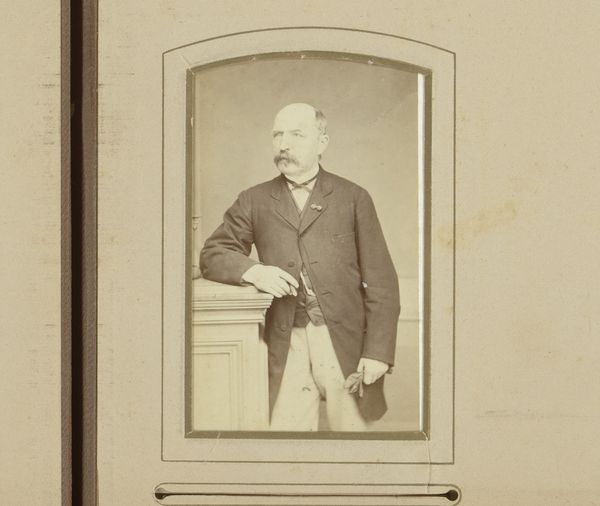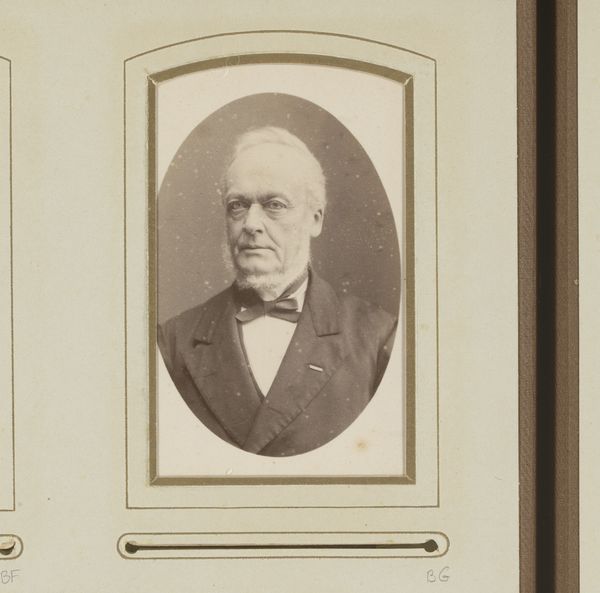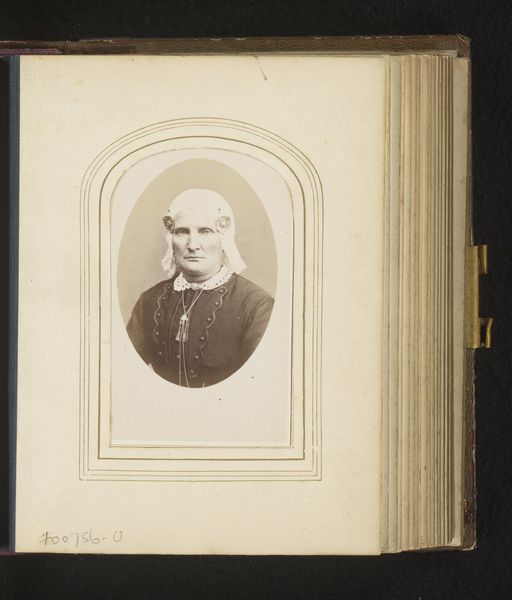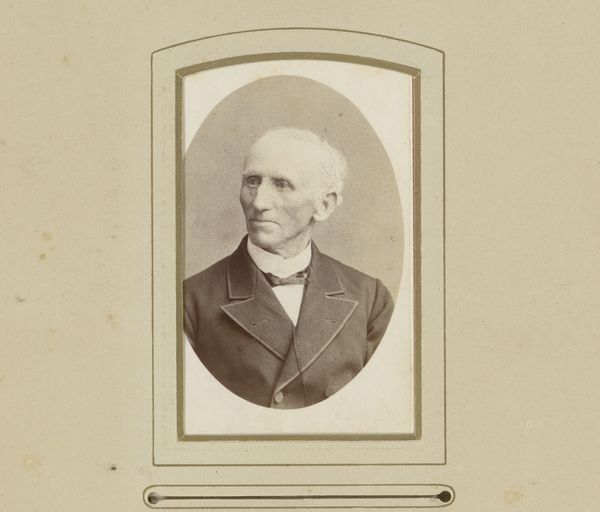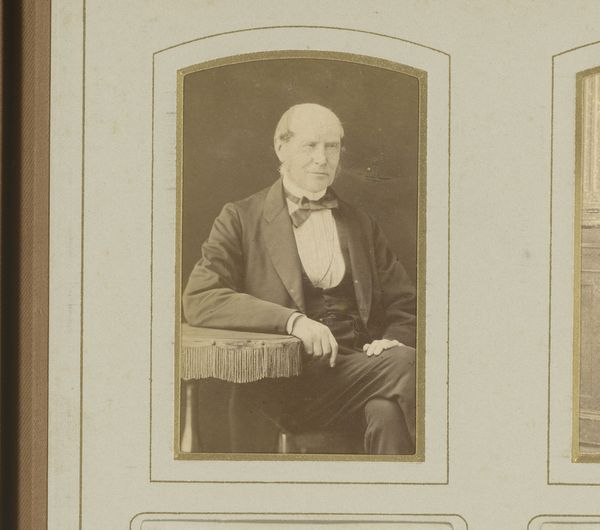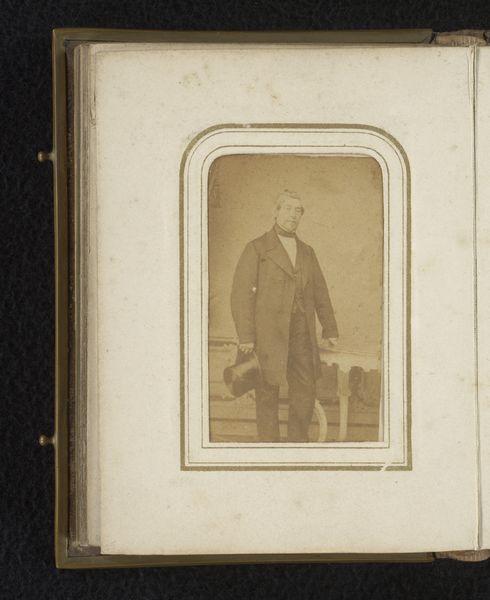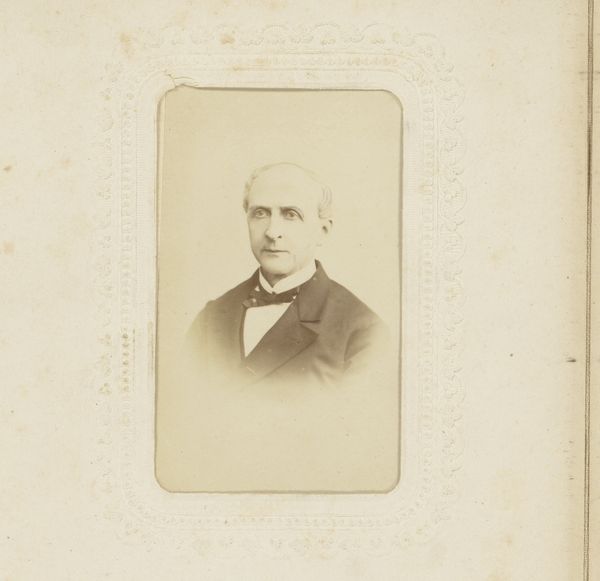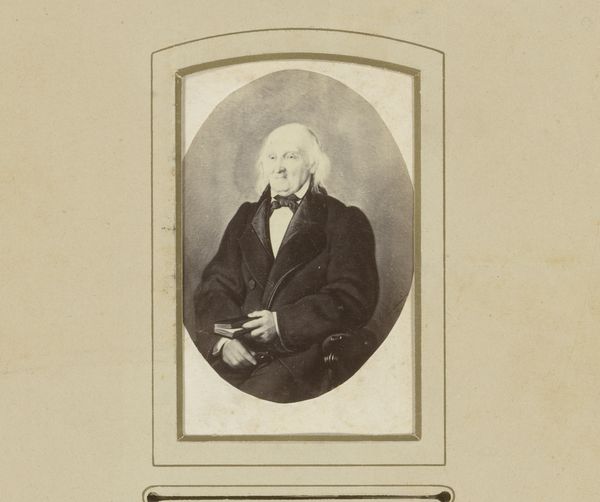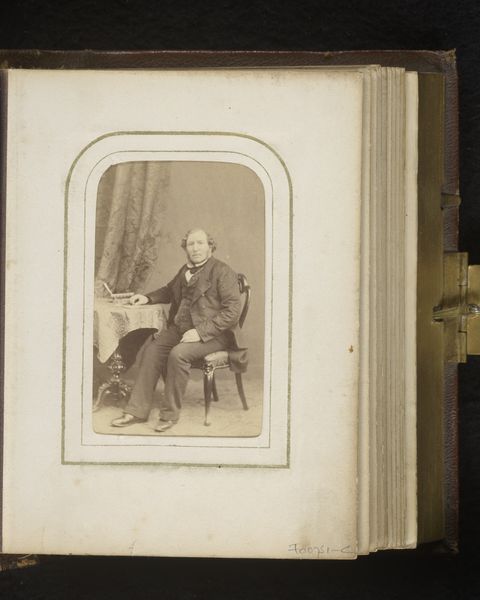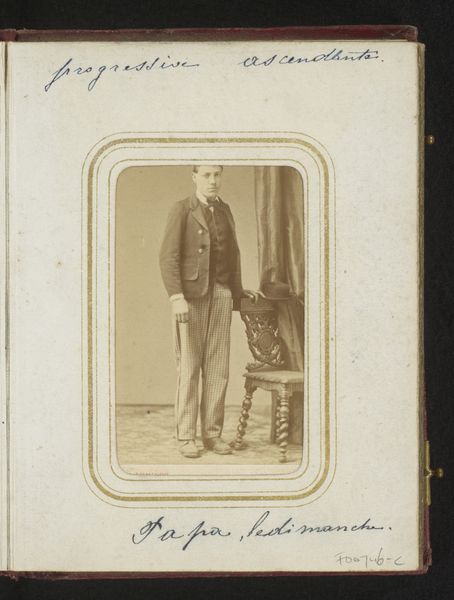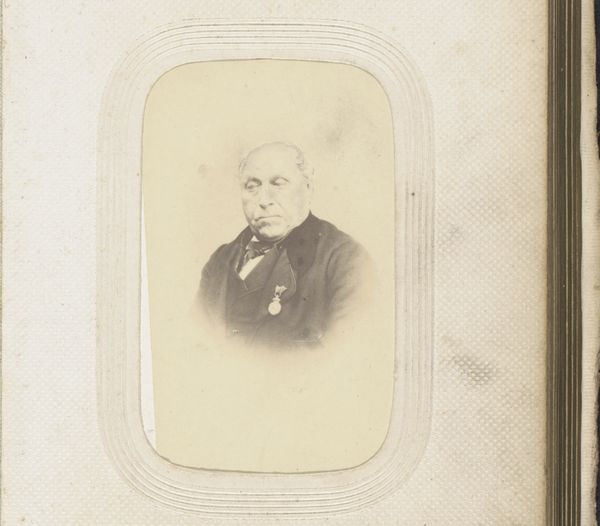
Dimensions: height 103 mm, width 63 mm
Copyright: Rijks Museum: Open Domain
Curator: Up next we have “Portret van een zittende man met bakkebaarden,” or "Portrait of a Seated Man with Sideburns," an albumen-print photograph created sometime between 1860 and 1900. Editor: He looks rather severe, doesn't he? There’s a stillness and formality that's typical of portraits from this era. His dark suit is almost imposing. Curator: Indeed. Photography during this period was a far cry from our instant digital snapshots. Each image held considerable weight and represented deliberate choices in composition and tone. Editor: This sitter's severe expression—his very self-possession—suggests to me a desire to control how he would be seen, how his image might perpetuate ideas about respectability and authority, and which would definitely be enhanced by those prodigious whiskers! I think there’s an interesting dialogue happening here between visibility, gender, class and power. Curator: Quite right. The photograph offers a mirror not only to the sitter’s immediate likeness but also to his broader ambitions within a specific societal context. And the gelatin-silver printing method used to make the photograph imbues it with rich detail, a sense of enduring significance, like icons that can trigger memory, emotion, and history. The sepia tones, moreover, deepen that sense of enduring presence and the gravity of time. Editor: Precisely. And in our era of fast, fluid digital images, it feels important to remember this more meticulous history, especially concerning issues of identity. How are these inherited representations reflected today, and how do our visual languages either subvert or reinforce existing notions of what is, and what is not, socially acceptable or artistically valuable? Curator: A fascinating point. By looking at images such as "Portrait of a Seated Man," we acknowledge the enduring legacy and ever-evolving symbolism of visual language. Editor: It invites questions not only about its past but also its enduring present in the constant retelling of the same old stories.
Comments
No comments
Be the first to comment and join the conversation on the ultimate creative platform.
